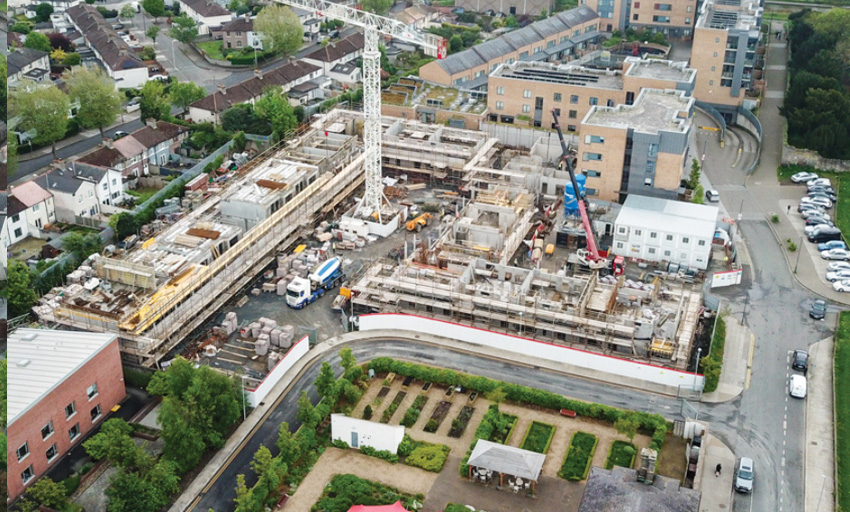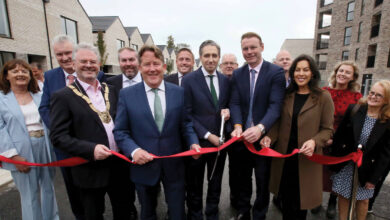Designing and delivering good social housing at scale: Key considerations and strategies

Addressing the need for affordable and quality social housing in Ireland requires a design-focused approach that considers the wellbeing of its tenants.
Designing good social housing involves understanding the challenges and opportunities, while delivering it at scale necessitates effective strategies to meet the increasing demand we are currently facing. Within this article, Chris White, Development Manager at Circle, explores what he believes are the key elements that make for good social housing and discusses key strategies that could be used to deliver at scale in the appropriate locations.
Adequate space and functionality
A good home design starts with providing adequate space and functionality. Each home should be designed to accommodate the needs of residents, offering well-proportioned rooms, efficient layouts, and sufficient storage space. Ensuring functionality includes considering the placement of amenities and utilities, such as kitchens, bathrooms, and utility rooms, to maximise convenience and ease of use.
Accessibility and inclusivity
Social housing should be designed with accessibility and inclusivity in mind. Incorporating features such as step-free entrances, wide doorways, and accessible bathrooms ensures that individuals with disabilities or mobility challenges can comfortably navigate and use the space. Furthermore, designing common areas and outdoor spaces to be inclusive promotes social interaction and engagement among residents of diverse backgrounds and abilities.
Quality materials and finishes
Using high-quality materials and finishes is crucial to create durable and visually appealing social housing. Quality materials contribute to the longevity and maintenance of the building, reducing costs in the long run for the local authorities and approved housing bodies. Additionally, thoughtfully selected finishes can enhance the aesthetic appeal and overall ambiance, creating a pleasant living environment for residents. This is key for establishing quality neighbourhoods which residents will enjoy living in.

Energy efficiency and sustainability
Integrating energy-efficient and sustainable features into social housing design benefits both residents and the environment. Taking a fabric first approach alongside energy-efficient appliances, and renewable energy sources can help reduce utility costs for residents and minimise the ecological footprint of the development. Implementing sustainable design practices, such as green roofs, can further enhance the environmental sustainability of social housing projects.
Community spaces and amenities
Designing good social housing involves providing communal spaces and amenities that foster a sense of community and improve residents’ quality of life. These spaces can include common rooms, playgrounds, gardens, and shared outdoor areas. Integrating amenities such as childcare crèches, healthcare facilities, and community centres within the development enhances convenience and supports the wellbeing of residents, thus creating thriving and sustainable communities for individuals and families.
What will it take to deliver homes at scale in Ireland?
- Collaborative partnerships: Establishing collaborative partnerships between governments, developers, architects, contractors, and AHBs is crucial for delivering social housing at scale. Effective collaboration ensures that all angles are considered, resources are optimised, and expertise is leveraged in order to increase delivery to assist the national housing emergency in Ireland.
- Streamlined planning and approval processes: Efficient planning and approval processes are essential to deliver social housing at scale. Streamlining bureaucratic procedures, expediting planning permissions, and establishing clear guidelines for social housing developments can accelerate the delivery timeline and ultimately reduce costs associated with delays.
- Adaptive reuse and brownfield development: The repurposing of existing buildings and the redevelopment of brownfield sites can help to further increase the delivery of social housing at scale. These approaches maximise the use of available resources, reduce construction times, and contribute to the revitalisation of existing neighbourhoods.
In conclusion, designing and delivering good social housing at scale in Ireland requires an integrated and thoughtful approach to design, community integration, sustainability, and adaptability. By considering the specific needs and aspirations of future tenants, leveraging collaborative partnerships, and streamlining processes, we can ensure the successful delivery of high-quality social housing that addresses the pressing need for social and affordable homes in Ireland within these challenging times.
Circle Voluntary Housing Association has delivered over 2,500 homes and has supported over 5,000 people. With over 2,240 social and affordable homes in their pipeline for delivery in the next three years. Circle delivers quality homes unique models of social housing by utilising the key considerations referred to within this article, this has given Circle the opportunity to deliver unique and first-of-its-kind model of social housing such as our Housing with Supports (HWS) Inchicore project. HWS will deliver 52 homes to older people aged 55 and over in collaboration with Alone located in Dublin 8. These homes are underpinned by age-appropriate housing and universal design principles including own-door living with onsite staff support.

T: +353 1 407 2110
E: info@circlevha.ie
Development Enquries contact
E: developmentteam@circlevha.ie
W: www.circlevha.ie





